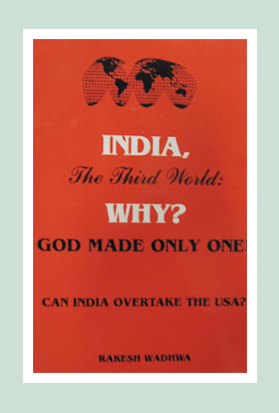In India, ‘Economic Equality’ Continues to be Just Arm-Chair Idealism
“Inequality in India has grown faster in the last 10-12 years than in any other time in our history since the colonial raj.”
– P. Sainath, Senior Journalist and Rural Affairs Editor, The Hindu
We have all heard a lot of talk about the need for “inclusive growth” in India, especially in the last few years – ever since the powers that have had to face the deafening “anti-corruption” music, what with a barrage of multi-million dollar scams being exposed every other day by the increasingly activist television media of the country. One could ask – wasn’t that exactly what we set out to achieve more than 60 years ago? Wasn’t that the whole point of fighting the colonialists tooth and nail for freedom? Doesn’t political independence entail socio-economic independence too? The fact is – economic equality has become a victim of malevolent, ill-conceived, unnecessary, and overzealous government intervention into the economic lives of the people of the union.
Economic Equality or Political Gimmickry?
Under the garb of pursuing economic equality and reforms, successive central governments of this great nation of ours have brought in a wave of flawed neo-liberal market systems, which have only promoted crony-capitalism to the hilt, and reinforced the concentration of wealth and unaccounted money-power. Instead of adopting a true-spirited free-market economy that has the power to deliver two-thirds of the nation’s population from the abject poverty they have been forced into, the establishment is constantly pushing for an array of misguided, rather deceptive redistribution practices – the latest being the atrociously socialistic ‘Direct Cash Transfer’ scheme, which has already duped millions into spending money they don’t have. Not to mention the embarrassingly inefficient “pro-poor” programs, like the NREGA, being rolled out at the expense of the tax payer.

Source: Euromonitor International from national statistics
Note: A society that scores 0% on the Gini index has perfect equality, where every inhabitant has the same income. The higher the number over 0%, the higher the inequality, and a score of 100% indicates total inequality, where only one person receives all the income.
It seems, instead of trying to provide an enabling socio-economic environment to the country that might actually help the poor help themselves, our government is more interested in creating greater volumes of selective subsidization that benefit a select few, and top-load more taxes on the working classes of the nation.
Some Facts for the Status-Quoists to Chew On
India actually had better economic equality at the time of independence than what it has achieved in the last 20 years – the period chronicled by many as the golden age of economic development in the country. On the contrary, the inequality graph of the nation has instead taken a steep plunge during this period. Our ‘Gini’ co-efficient – the official unit for measuring income inequality, has climbed up to 0.38 from the pre-independence figure of 0.32. It might be hard to believe, but before our so-called economic liberalization in the early 1990s, this metric for India was much closer to that of the developed countries. Today, we rub shoulders with totalitarian regimes like China. But god forbid – lets never take a cue from the things that they are doing right!
Although government bodies and studies (read the Planning Commission) might go to town with their claims that income inequality has gone down in India, any number of scientifically compiled reports will show that it has actually increased both in rural, and in urban India. A Mordor-esque crater has been formed between the rich and the poor in the country in just the last decade.
Jayati Ghosh, Chairperson for the Centre for Economic Studies and Planning at JNU, and the State Commission on Welfare of Farmers, has summed it up well, “The period since the neo-liberal economic reforms were introduced in India has been one of dramatically increased income inequality. The most dramatic and remarkable improvement in consumption has been of those who were already the richest people in India – that is, the top 20% of the urban population.”
 Rakesh Wadhwa. Ever since, I was a school boy, I knew India was on the wrong path. Socialism was just not what we needed to get ahead. Government controlled our travel; government controlled our ability to buy and sell; and government controlled our freedom to move our money. My life has focused on the inherent rights people have. When I was in college, I never understood, what the governments meant by their "socialistic attitude". If people are free to buy, sell and move their capital themselves without any restrictions by state, then the welfare of people is inevitable & hence the countries they live in will become wealthy. The government has no right whatsoever, to point a finger at me or my business. I am not a revolutionary. I just want to light up my cigarette and not get nagged about it. I believe in non-interfering attitude to attain more.
Rakesh Wadhwa. Ever since, I was a school boy, I knew India was on the wrong path. Socialism was just not what we needed to get ahead. Government controlled our travel; government controlled our ability to buy and sell; and government controlled our freedom to move our money. My life has focused on the inherent rights people have. When I was in college, I never understood, what the governments meant by their "socialistic attitude". If people are free to buy, sell and move their capital themselves without any restrictions by state, then the welfare of people is inevitable & hence the countries they live in will become wealthy. The government has no right whatsoever, to point a finger at me or my business. I am not a revolutionary. I just want to light up my cigarette and not get nagged about it. I believe in non-interfering attitude to attain more. 
 The Bastiat Award is a journalism award, given annually by the International Policy Network, London. Bastiat Prize entries are judged on intellectual content, the persuasiveness of the language used and the type of publication in which they appear. Rakesh Wadhwa won the 3rd prize (a cash award of $1,000 and a candlestick), in 2006.
The Bastiat Award is a journalism award, given annually by the International Policy Network, London. Bastiat Prize entries are judged on intellectual content, the persuasiveness of the language used and the type of publication in which they appear. Rakesh Wadhwa won the 3rd prize (a cash award of $1,000 and a candlestick), in 2006.
What the readers are saying…